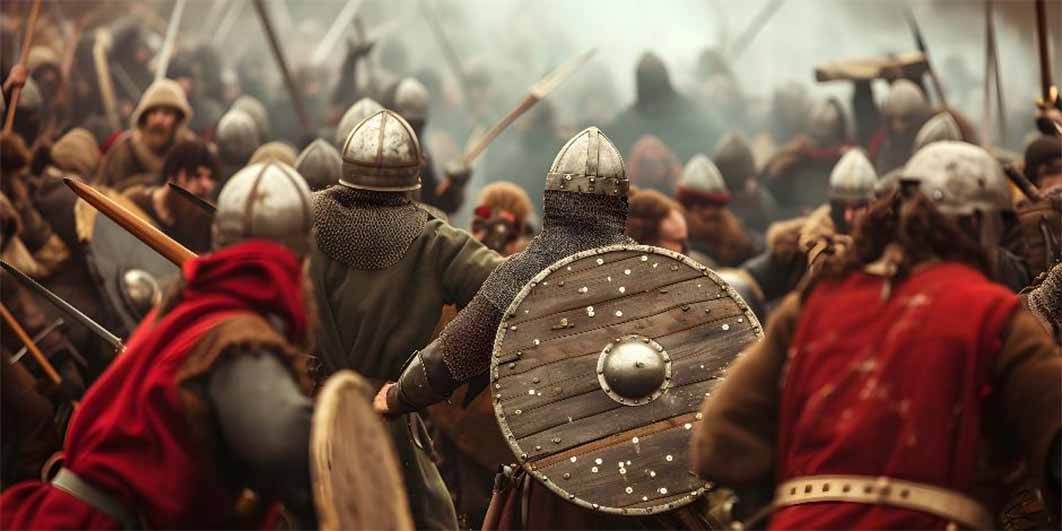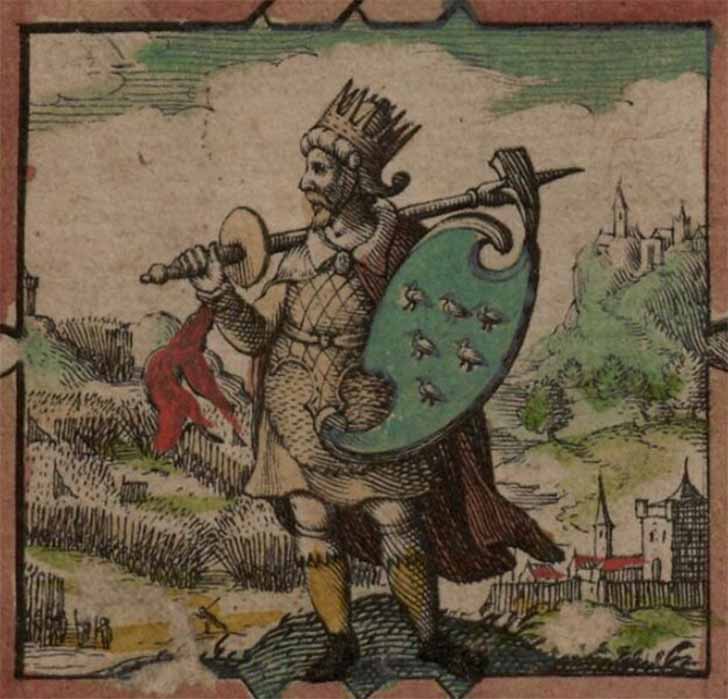
The Battle of Cymenshore, AD 477
In the aftermath of the Romans’ departure from Britain in the fifth century AD, the coast of the former Roman province was left vulnerable to various invaders who sought to establish kingdoms of their own. These men are usually grouped under term Saxons, but they came from a variety of cultures on the coasts of modern Belgium, the Netherlands, Germany, and Denmark – Jutish, Saxon, Angle, Frisian, Danes, even the Norse – these invasions would eventually lead to the term Anglo-Saxons (from the two Germanic peoples of the Jutland Peninsula – the Angles and the Saxons). What is more, we are often left bereft of details as to how these invasions occurred and progressed.
The first Saxon-and-other invasions of Britain in the fifth century AD are shrouded in uncertainty – it is not for no reason this is the period known as the Dark Ages. There are many challenges with the history of this period – we are uncertain on all of the essential questions of history – we are uncertain about by whom, where, exactly when, and precisely why these invasions occurred. It seems that before long, however, even in the contemporary and near-contemporary sources, Saxon was used as a catch-all term for all invaders (much like Danes would later be used as a catch-all term for the Viking invaders even if they were not originally from Denmark). The second invasion, however, led by Ælle and his three sons (Cymen, Wlencing and Cissa), and occurring (traditionally) in AD 477 was actually Saxon and, what is more, using one surviving source, gives us enough detail to reasonably reconstruct what happened.

Representation of Anglo-Saxon warriors in battle. (Sarah / Adobe Stock)
The First Invasions – Saxons “Infesting” the Sea
The first invasion of Britain was in Kent, traditionally dated to 449, when the brothers Hengist and Horsa (who were Angle or Jutish – but are later termed Saxon) were invited in to assist the warlord Vortigern against Pictish raids, probably as mercenaries. As such, it was not really an invasion at all, but soon, the mercenaries turned against their employer and carved out an empire for themselves within Kent. Horsa died in battle in 455 but Hengist, with his son Æsc (or Octa), established their dominance in Kent by 457.
The second invasion of Britain in AD 477, at a place named Cymenshore, garners little attention from modern historians but would lead to the establishment of the kingdom of the South Saxons or Sussex (a name which obviously survives until today). In fact, this was the first actual Saxon invasion and there is, surprisingly, enough detail in surviving sources for us to examine it in some depth. Soon after the overwhelming success of Ælle’s invasion, others followed (in 495, 501, 514, the list goes on and there were probably others which have not been recorded in the surviving record). These were men (and their families) from the continent encouraged to invade and told of the easy pickings to be had on the coast of an empty Britain. Each of these invasions would establish various kingdoms within Britain whose names survive to this day, and which became fundamental in the establishment of Anglo-Saxon England, places like Essex, Wessex, and Mercia. Even towns (like Portchester and Portsmouth, Chichester) have names associated with Saxon invaders.
The Saxons had, in fact, been raiding the coasts of Britain since, at least, the third century AD – the historian Eutropius talks of them “infesting” the sea in AD 280 (Breviarium 9.21) – this infestation may also have related to the situation when Eutropius was writing in AD 369. These were usually raids for plunder but in the fifth century the nature of these attacks changed – now the invaders were landing with the intention of staying to conquer, remain, and settle permanently in the rich, fertile, and easy-to-conquer lands of coastal Britain. One reason for this change was the abandonment of Britain by the Roman empire. Faced by complex internal and external challenges, Rome simply could not maintain the provinces of Britain (by the fifth century Britain was divided into four, perhaps even five, provinces). The traditional date of this abandonment of Britain is in c. 410 but there is evidence, especially in recent archaeological finds, that suggests Roman contact was kept until around 450.
The First actual Saxon invasion, therefore, came in AD 477 (the date provided in the later Anglo-Saxon Chronicle – though this too has issues). It was led by Ælle and his three sons: Cymen, Wlencing (sometimes known as Pleting), and Cissa. The Anglo-Saxon Chronicle entry for 477 tells us that they “came to the land of Britain with three ships at the place which is named Cymen’s Shore (Cymenes ora), and there killed many Welsh [meaning Britons] and drove some to flight into the wood which is called the Weald (Andredes leag).”

Depiction of Ælle holding a shield with a design representing Sussex, taken from John Speed's 1611 “Saxon Heptarchy.” (Public domain)




